Here is Stuart's week 12 report:
Following a rather promising first half of the ‘main’ mothing season, the second half is turning out to be a bit of a damp (and breezy) squib. There was no improvement in the weather for Week 12, and no improvement in the diversity and abundance of the catch. So, now seems like the perfect chance to show off some of the more commonly recorded species.
The Large Yellow Underwing (Noctua pronuba) is probably the most frequently recorded moth of my trapping sessions in the university woodlands so far. It is also the most frequently recorded species on the entire database for County Durham, and it is the second most frequently recorded species - after the Heart and Dart (Agrotis exclamationis) - in five years of trapping in my garden in Essex. This is undoubtedly among the most widespread and common of our moths, and familiarity with it certainly breeds contempt. But hold on a second ... before we tick off our 100th N. pronuba of the session and launch it unceremoniously back into the shroud of night, uttering under our breath “another Large Yellow Underwing; they’re so common", maybe we should pause, allow the moth to rest on our finger (if it will, they’re flighty at the best of times), or sit it in its pot. Let's ponder over it for a moment.
| This a very variable species, with a number of colour morphs within a population; the individual we hold now may look different from the last, or the next. This is possibly an adaptation to predation pressure, whereby species that occur in high densities exhibit high colour polymorphism as an anti-searching image response. I’ll elaborate: predators may develop a search-image of commonly occurring prey. However, if the prey item exhibits a spread of different colour and pattern morphs throughout its population, the local predators will either need to build a catalogue of several explicit search-images, or make do with a general, and rather vague, search-image of its prey – either way, being variable has its advantages. If this isn’t enough, behind its cryptic, and frankly, fairly dull facade, is more defensive weaponry – a flash of its bright, contrasting ‘yellow’ hindwings is designed to startle hunters on the prowl. What’s more, the moth we hold can detect foraging bats (Windmill et al., 2006) often before they can detect it, and is capable of navigating by the moon, the stars and the earth’s magnetic field (Baker & Mather, 1982). So, now we’re ready to release our moth back into the night, perhaps instead we might utter “another Large Yellow Underwing; they're so common ... and they're a marvel of evolution” The Mother of Pearl (Pleuroptya ruralis) has been one of the most commonly recorded of the micro-moths in the woodlands so far; and because of its size, it is one of the more obvious. The species is a good example of why the term ‘micro-moth’ is not always appropriate; with a wingspan of up to 40 mm, it is as large as many of the macro-moths, and superficially resembles those of the family Geometridae. Its larvae roll up the leaves of common nettle (Urtica dioica) and feed upon them from within; all the while, attached to a thread of silk. When threatened, the caterpillar dashes from its tubular domicile and dangles from its silken lifeline. |
| Despite its common name, the Common Carpet (Epirrhoe alternata) has not been hugely numerous within the woodland, but instead has occurred in a steady stream of modest numbers; with the first generation visiting the trap throughout May, a break during June, and the second generation showing from the beginning of July up to the present. The Canary-shouldered Thorn (Ennomos alniaria) is so named for its bright, canary-yellow thorax. The moth's speckled underwings resemble birch leaves as they turn yellow in the shortening days of Autumn; thus, providing camouflage for egg-laying females - whose offspring will feed on the tree next Summer. This is the fifth of the ‘thorns’ recorded in the woodland so far - the others being Lunar Thorn (see Week 5), Early Thorn, Purple Thorn (both Week 9) and Dusky Thorn (Week 10). This species is widely-distributed and frequent throughout Britain. |
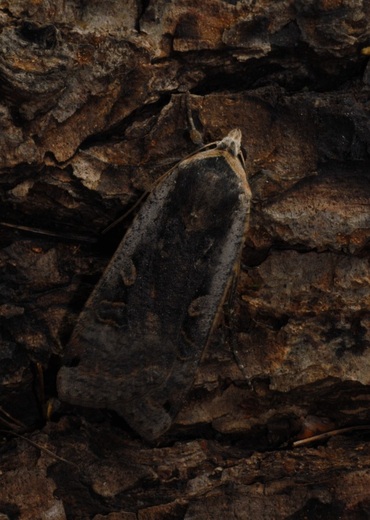
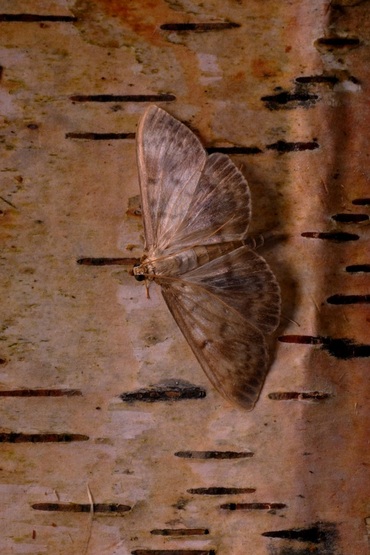
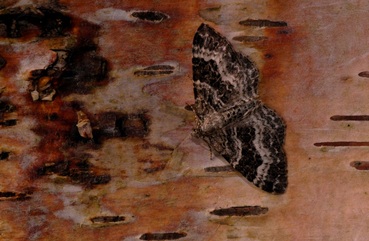
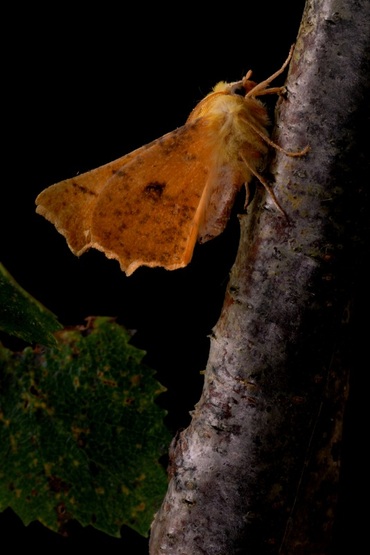
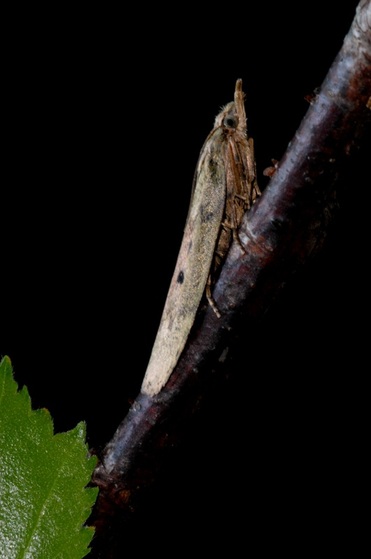


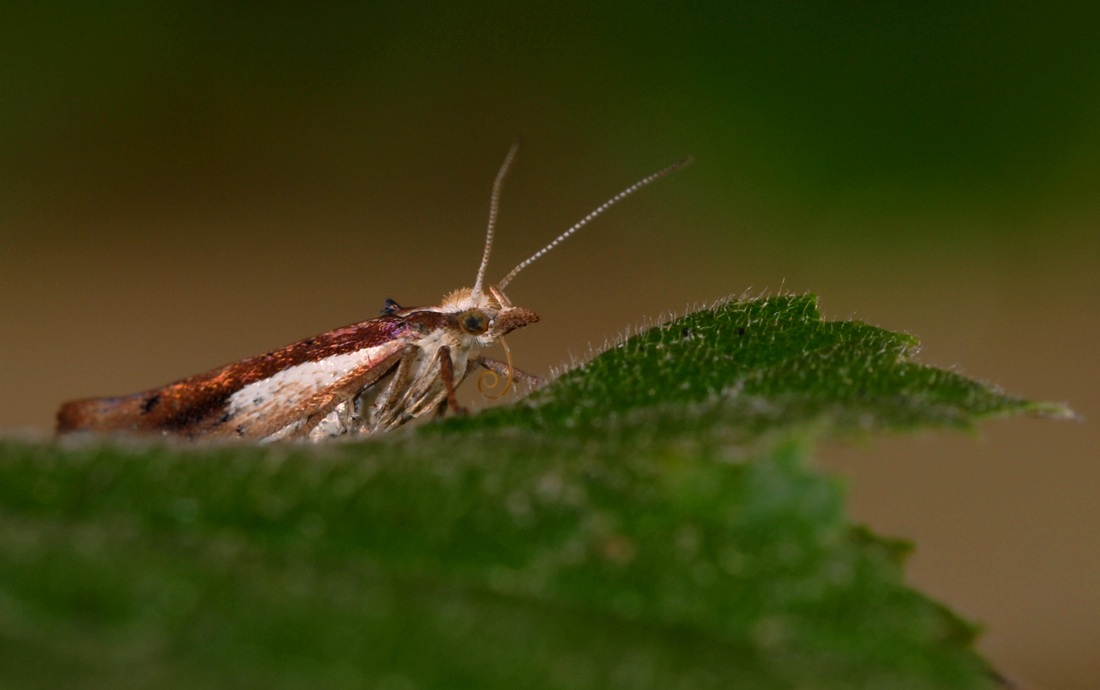
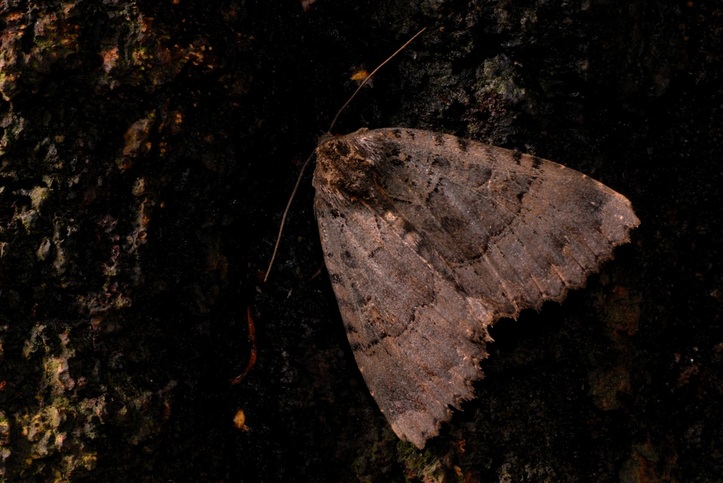
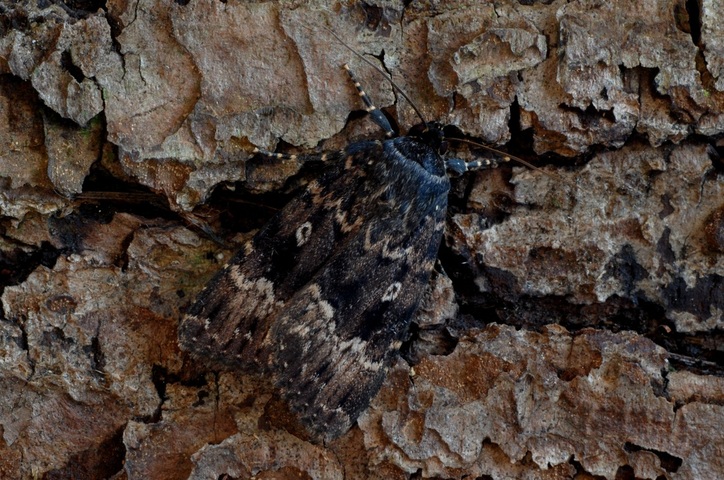
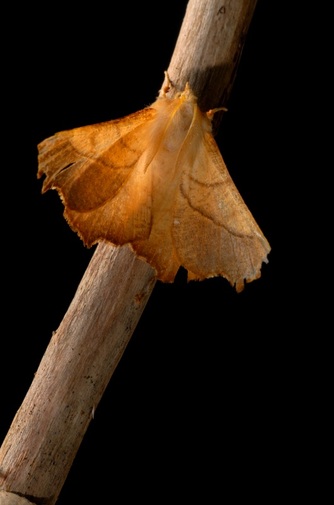
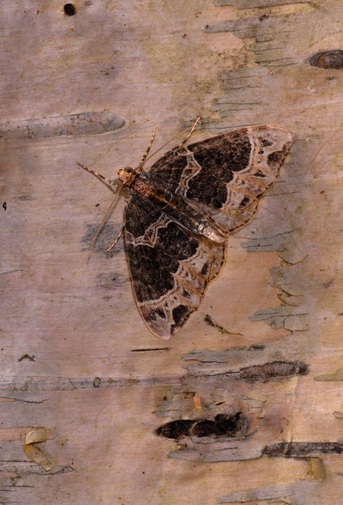
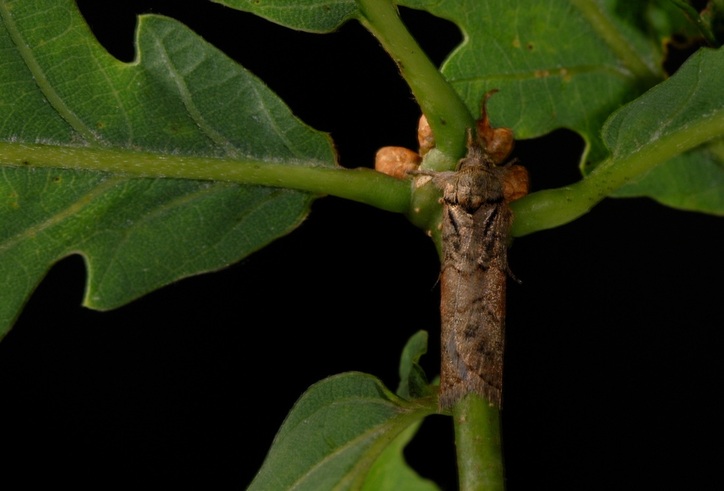
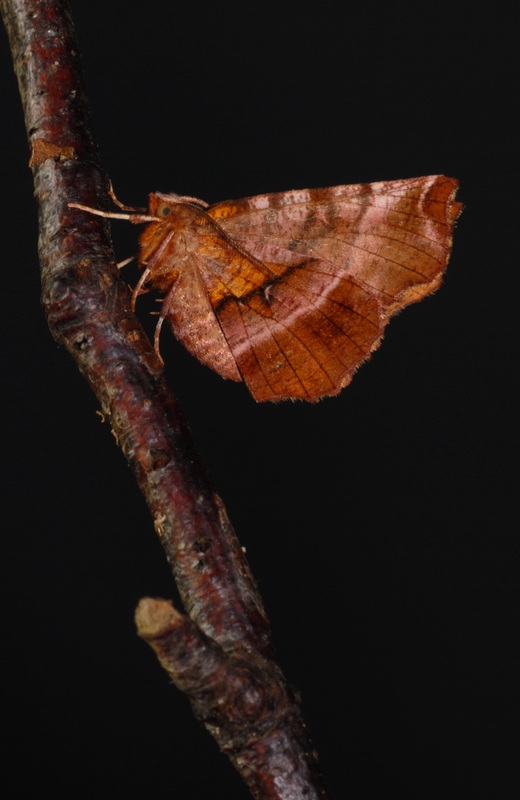
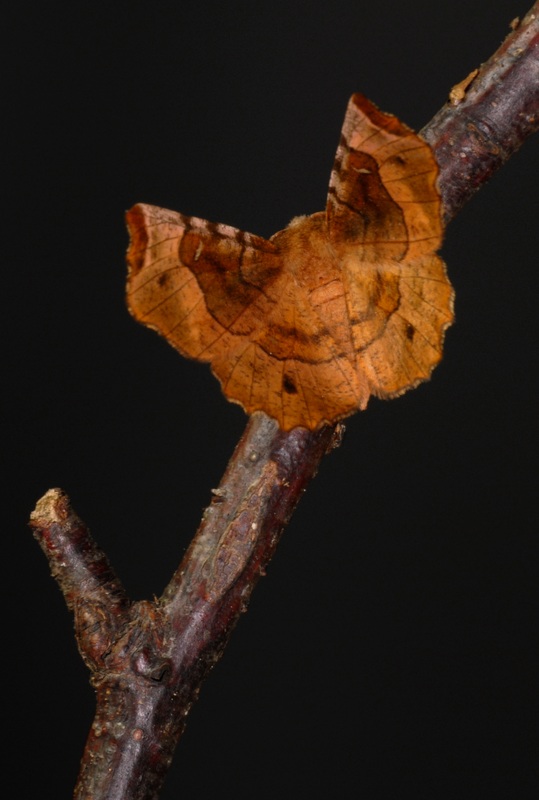
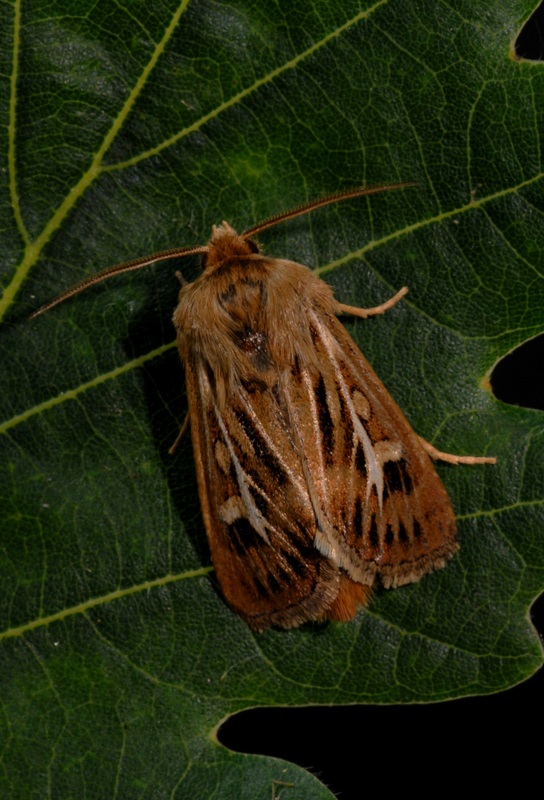
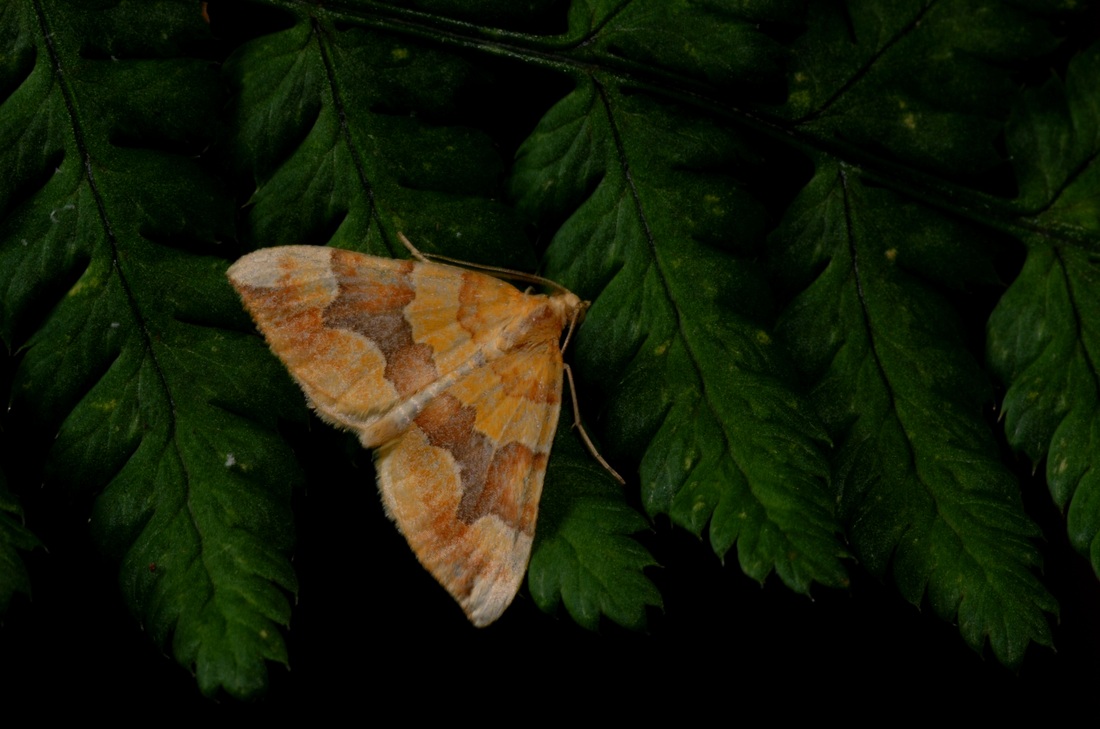
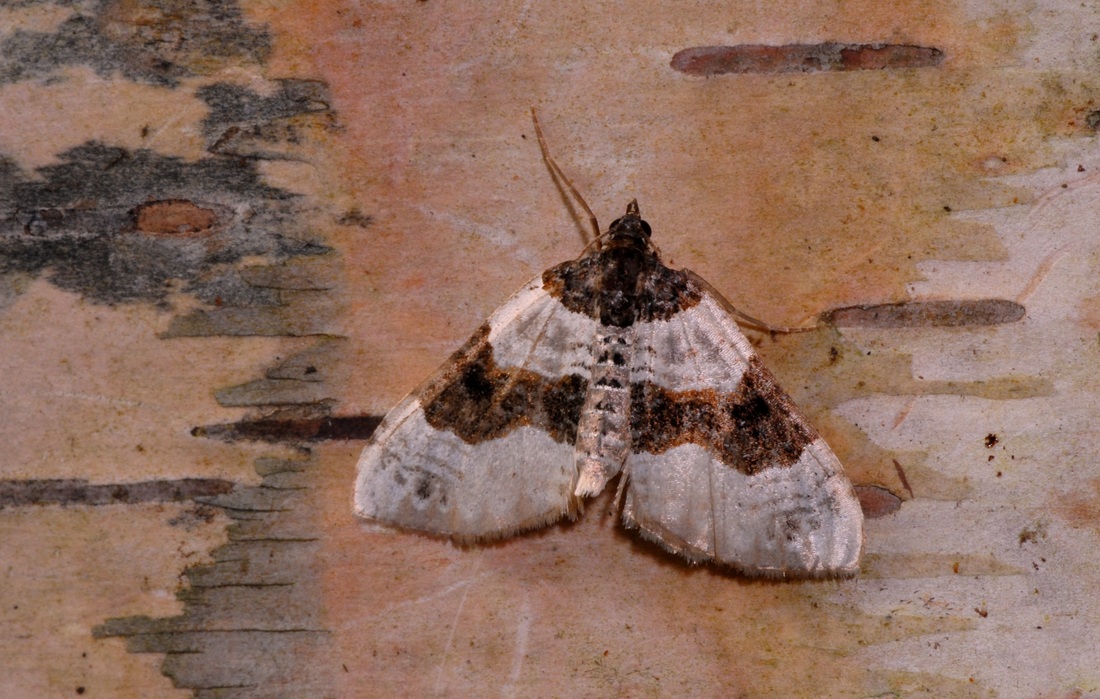
 RSS Feed
RSS Feed
